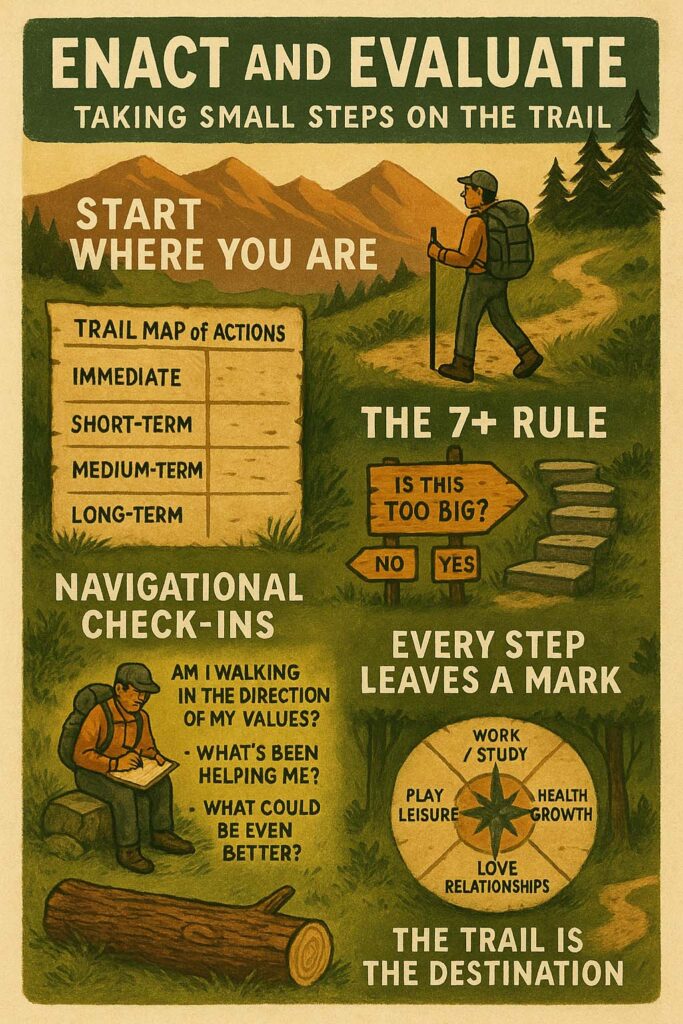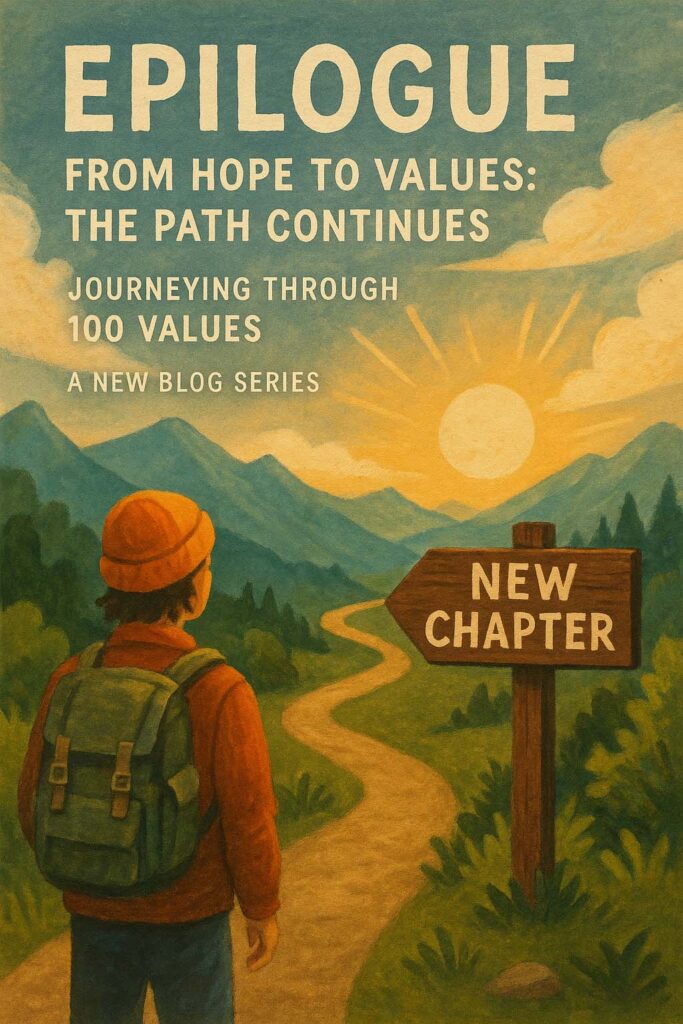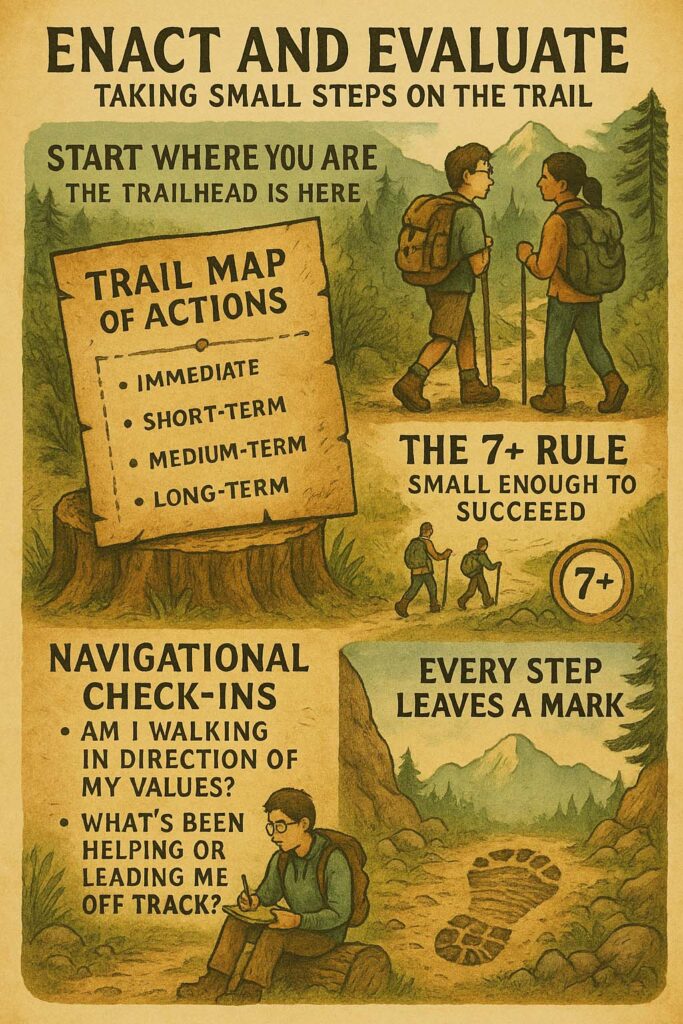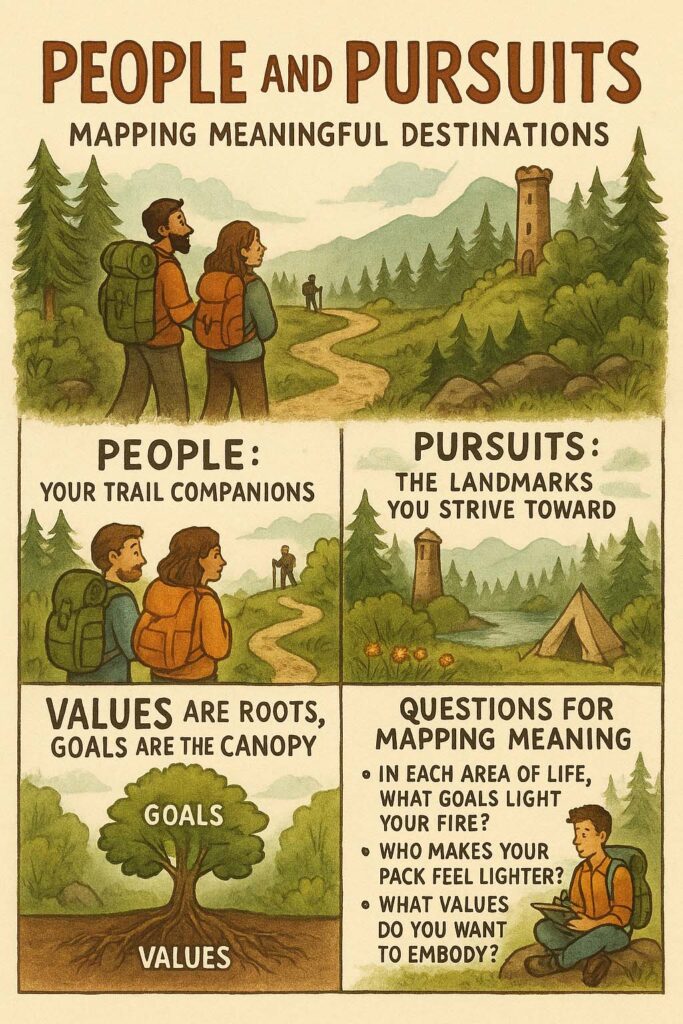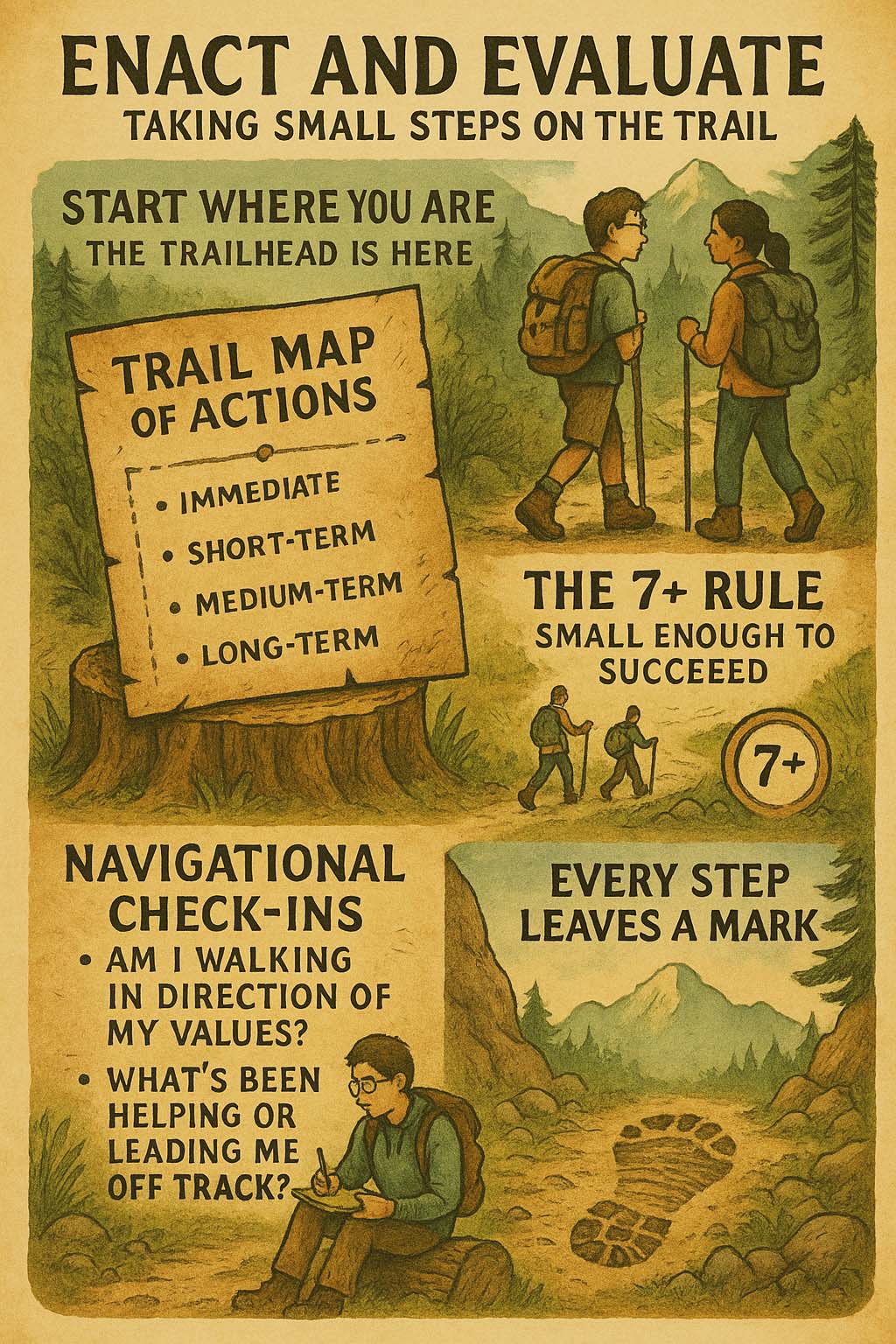
🥾 Enact and Evaluate
With the compass of values in hand and the map of people and pursuits spread before them, Alex and Maya reach a fork in the forest path. The peaks still loom in the distance, their goals both inspiring and intimidating. “Now comes the part that most travellers skip,” Maya says. “We lace up our boots and start walking—one small, meaningful step at a time.”
In the terrain of ADHD, where overwhelm, detours, and fatigue are frequent companions, grand ambitions often feel too far away. The final step in the HOPE framework—Enact and Evaluate—invites Alex (and all of us) to stop waiting for the perfect moment and start walking the path, however imperfectly, right now.
🛤️ Start Where You Are
Goals can feel like mountaintops, distant and daunting. Especially after a setback, it may seem easier to sit down and wait for the fog to lift. But Maya reminds Alex: you don’t climb mountains in leaps. You walk them—step by step, breath by breath. That’s the core of Enact and Evaluate.
Alex chooses a goal: developing independence. It’s big. Maybe even lifelong. But with Maya’s help, he sketches out a Trail Map of Actions, marked in four sections:
- Immediate (today or this week)
- Short-Term (within a month)
- Medium-Term (within six months)
- Long-Term (over a year or more)
Each point on the map is a small stone to step on. For Alex, this might mean cooking dinner once this week (Immediate), taking responsibility for a morning routine (Short-Term), saving up for a trip with friends (Medium-Term), or learning to manage his ADHD meds independently (Long-Term). The key? Each action is tied to a value—in this case, self-reliance.
🪜 The 7+ Rule
To make each step doable, Maya introduces the 7+ Rule: before acting, Alex asks, “On a scale of 0 to 10, how likely am I to do this?” If the number is 7 or higher, he’s good to go. If not, the step needs to be shrunk.
Instead of “revise 3 chapters tonight,” Alex might decide to “highlight 5 key points from one page.” The smaller the step, the more likely he is to begin—and the more momentum he gains.
Every trailwalker knows: a short walk is better than standing still.
🧭 Navigational Check-Ins
But action is only half the trail. “Even the best hikers stop to check their map,” Maya says.
Every week or so, Alex pauses to reflect:
- “Am I walking in the direction of my values?”
- “What’s been helping me move forward?”
- “What’s been leading me off track?”
- “What could be even better if…?”
He uses his journal—or the Safe Life Guide app—as his Navigational Logbook, tracking actions, moods, and missteps not to punish himself, but to gently adjust course.
Sometimes, a tough week means pausing to rest. Other times, it means noticing a trail that loops back on itself—and trying a different approach. Reflection is part of movement.
🌌 The Bullseye Map
To get a bird’s-eye view, Maya introduces the Bullseye Map. It’s a compass rose with four directions—Work/Study, Play/Leisure, Health/Growth, Love/Relationships. In each area, Alex places a mark:
- How close am I to my values here?
- Am I near the bullseye, or wandering the outer rings?
It’s not about perfection—it’s about awareness. The closer he gets to the centre, the more aligned his daily steps are with who he wants to be.
🪵 Every Step Leaves a Mark
On one tough day, Alex wonders if he’s moving at all. He’s tired. Distracted. The mountain looks far away.
Maya sits beside him on a mossy log and says, “You might not see the distance you’ve travelled, but the trail remembers your steps. Every choice matters. Every tiny act of courage adds up.”
🌟 The Trail is the Destination
Living by your values isn’t about racing to the end. It’s about how you walk. It’s about climbing with care, resting with respect, and choosing your direction—even when the path isn’t clear.
As Alex stands again, brushing dirt from his palms, he smiles. He knows the climb will be uneven. But now, he walks it with intention.
He’s not just going somewhere.
He’s becoming someone.
